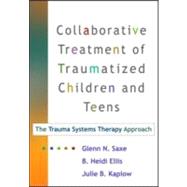For too many traumatized children and their families, chronic stressors such as poverty, substance abuse, and family or community violence—coupled with an overburdened care system—pose seemingly insurmountable barriers to treatment. This empowering book provides a user-friendly blueprint for making the most of limited resources to help those considered the “toughest cases.” Evidence-based strategies are presented for effectively integrating individualized treatment with services at the home, school, and community levels. Written in an accessible, modular format with reproducible forms and step-by-step guidelines for assessment and intervention, the approach is grounded in the latest knowledge about child traumatic stress. It has been recognized as a treatment of choice by state mental health agencies nationwide.








